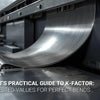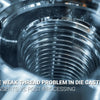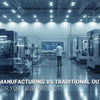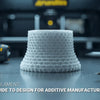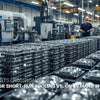How Does Additive Manufacturing Compare to CNC Machining for Your Production Needs?
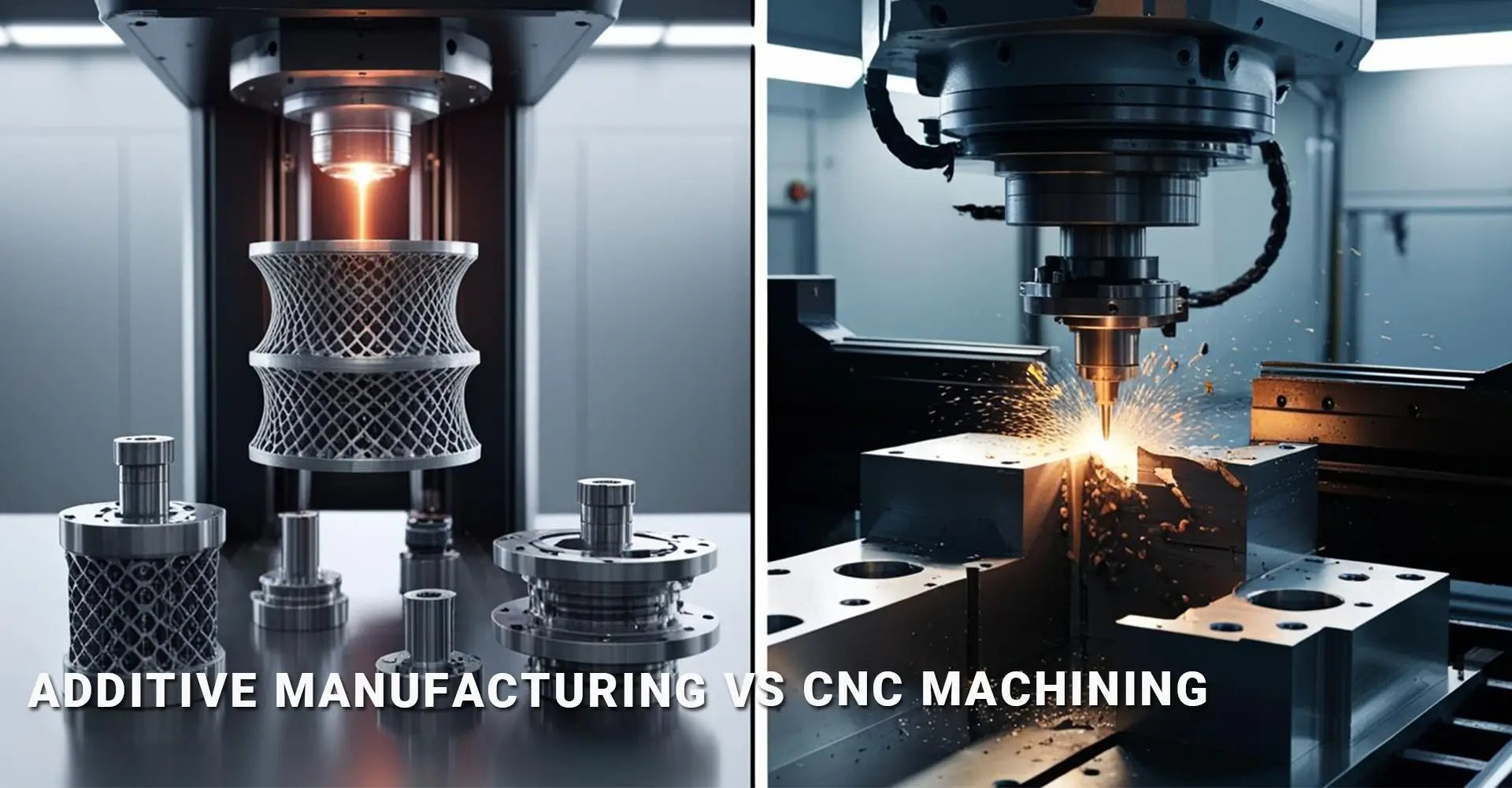
How Does Additive Manufacturing Compare to CNC Machining for Your Production Needs?

Deciding between additive manufacturing (3D printing) and CNC machining (subtractive manufacturing) impacts your product quality, costs, and time-to-market. These complementary technologies serve different purposes in manufacturing workflows, with each offering unique advantages for specific applications. Making the right choice requires understanding the fundamental differences between building up materials layer by layer versus cutting away from solid blocks.
For quick decision-making: Choose additive manufacturing for complex prototypes, small batches, and intricate geometries with internal features. Select CNC machining for tight tolerances (±0.025 mm), superior surface finishes, and high-volume production where per-unit costs decrease significantly over time. Both methods have their place in modern manufacturing strategies, often complementing each other in production environments.
Understanding the core differences between these manufacturing approaches helps you make informed decisions based on your specific product requirements, budget constraints, and production timelines. Let's examine the key factors that should guide your manufacturing strategy when considering an additive vs subtractive manufacturing comparison for your next project.
Table of Contents
- What Material Considerations Should Drive Your Manufacturing Choice?
- How Does Design Complexity Affect Your Manufacturing Approach?
- What Cost Factors Determine CNC vs. Additive Manufacturing Value?
- When Should You Consider Hybrid Manufacturing Solutions?
- Conclusion
What Material Considerations Should Drive Your Manufacturing Choice?
Material selection significantly impacts both process capabilities and final part performance. While CNC machining excels with traditional engineering materials, additive manufacturing opens possibilities for specialized applications with unique material properties. The range of available material options for additive vs subtractive processes continues expanding, but important differences remain that influence which technology best suits your specific requirements.
CNC machining supports over 100 materials including metals (aluminum, steel, titanium), engineering plastics (PEEK, Delrin), and composites. Meanwhile, additive manufacturing works with approximately 30+ specialized materials including photopolymers, thermoplastics (PLA, ABS, Nylon), and metal powders (titanium, aluminum, stainless steel). This material flexibility represents a crucial consideration when determining which manufacturing approach aligns with your product specifications.

CNC machining typically starts with solid blocks of commercially available materials, maintaining their isotropic properties throughout the finished part. This results in predictable mechanical behavior that meets established industry standards. In contrast, additive manufacturing builds materials layer by layer, which can create anisotropic properties depending on build orientation. However, AM excels with specialized materials like biocompatible resins for medical applications and lattice structures for lightweight aerospace components. For production environments requiring certified material properties, CNC maintains an advantage, though metal AM technologies like DMLS continue improving material consistency. Understanding these material differences helps engineers select the optimal process for each component's functional requirements.
How Does Design Complexity Affect Your Manufacturing Approach?
Design complexity represents perhaps the starkest difference between these manufacturing methods. Additive manufacturing thrives on complexity, while CNC machining excels with precise, uniform geometries that align with traditional design principles. When evaluating design complexity in 3D printing against the precision capabilities of CNC, consider how your product's geometric requirements align with each technology's inherent strengths.
Additive manufacturing creates complex internal channels, hollow structures, and organic shapes impossible with traditional manufacturing. These designs often reduce weight by 30-50% while maintaining structural integrity. CNC machining, however, delivers superior dimensional accuracy (±0.025 mm vs. AM's typical ±0.05-0.2 mm) for precision components like engine parts and medical instruments. This fundamental difference often becomes the deciding factor when choosing between AM and CNC for prototyping complex parts.

With additive manufacturing, design complexity comes virtually free - creating intricate lattice structures costs no more than solid blocks using the same material volume. This "complexity freedom" enables consolidating multiple parts into single components, reducing assembly requirements and potential failure points. CNC machining faces tool access limitations, requiring designs accounting for cutting tool reach and fixture considerations. Multi-axis CNC machines (5+ axes) partially overcome these limitations but increase programming complexity and costs. When evaluating designs, consider whether your priority is geometric freedom or dimensional precision, as this often determines the optimal manufacturing approach. Engineers increasingly design specifically for the capabilities of each process, optimizing both functionality and manufacturability.
What Cost Factors Determine CNC vs. Additive Manufacturing Value?
Cost structures between these manufacturing methods differ dramatically. Additive manufacturing typically involves higher material costs but minimal setup expenses, while CNC machining requires significant initial setup but benefits from economies of scale. Understanding these economic factors helps determine which approach delivers better value for your specific production volume and timeline requirements.
Additive manufacturing eliminates tooling costs ($0 vs. potentially thousands for CNC fixtures) making it cost-effective for prototypes and small batches under 50 units. CNC machining sees costs drop approximately 30% at 100+ units, becoming increasingly economical for high-volume production with CNC machining where material efficiency and faster production speeds offset initial setup investments. This crossover point varies by product complexity and material selection.
Beyond direct production costs, consider hidden expenses in your manufacturing decision. Additive manufacturing often requires post-processing (support removal, surface finishing) adding 15-30% to final part costs. CNC machining generates material waste (typically 30-70% depending on part geometry) but shops often recycle metal chips, recovering some material value. Labor costs differ significantly - CNC operations require skilled machinists for setup and programming, while AM systems need minimal oversight during builds but technical expertise for optimizing build parameters. For comprehensive cost analysis, examine your complete production lifecycle including design iterations, tooling changes, inventory costs, and lead times to determine the true economic impact of each manufacturing approach. Many companies find different cost advantages at different production stages.
When Should You Consider Hybrid Manufacturing Solutions?
Neither manufacturing method offers a perfect solution for all applications, leading many industries to adopt hybrid manufacturing solutions combining additive and subtractive technologies in integrated workflows. These approaches leverage the unique strengths of each process while minimizing their individual limitations, creating new possibilities for component design and production efficiency.
Hybrid manufacturing leverages the strengths of both processes: using additive methods for complex internal geometries (like conformal cooling channels in injection molds) followed by CNC machining for precision surfaces where surface finish accuracy: CNC vs AM becomes critical. This approach reduces material waste by 40% compared to pure subtractive manufacturing while maintaining critical dimensional specifications. Modern industrial machinery increasingly integrates both capabilities for maximum production flexibility.

Integrated manufacturing systems now combine both technologies on single platforms, allowing parts to move seamlessly between processes. For example, metal components might be 3D printed to near-net shape, then specific surfaces machined to tight tolerances without changing equipment or fixtures. This workflow particularly benefits industries like aerospace and medical device manufacturing where complex components require both internal features and precise external dimensions. Implementing hybrid approaches requires sophisticated design practices accounting for both additive constraints (build orientation, support structures) and subtractive requirements (tool access, fixturing). Companies adopting these integrated solutions report 25-35% reductions in total production time and significant quality improvements for complex components. As technology advances, these hybrid approaches will likely become standard practice for optimizing manufacturing efficiency.
Conclusion
The manufacturing method you choose depends on your specific requirements for materials, design complexity, production volume, and quality standards. Additive manufacturing offers unmatched design freedom and cost-effectiveness for small batches and prototypes. CNC machining delivers superior precision, surface quality, and economical large-scale production. Many forward-thinking manufacturers now implement hybrid approaches leveraging the unique advantages of both technologies.
Consider your specific application needs when choosing between manufacturing methods. For prototyping and small-batch production with complex geometries, additive manufacturing typically provides cost and time advantages. For precision parts in higher volumes, CNC machining often delivers superior economics and consistent quality. As both technologies continue advancing, the boundaries between them increasingly blur, creating new possibilities for innovative production strategies combining additive and subtractive processes. The most successful manufacturing operations maintain capabilities in both areas, allowing them to select the optimal approach for each project's unique requirements.
External Links Recommendation
[High-Volume Production with CNC Machining][^1]
[Design Complexity in 3D Printing][^2]
[Hybrid Manufacturing Solutions][^3]
---
[^1]: Explore this link to understand how CNC machining enhances efficiency and precision in high-volume production, making it a preferred choice for manufacturers.
[^2]: This resource will provide insights into how 3D printing allows for intricate designs that traditional methods can't achieve, revolutionizing product development.
[^3]: Discover how hybrid manufacturing combines the best of both additive and subtractive processes, leading to innovative and efficient production methods.
-
Posted in
3D Printing, 5 Axis CNC Machining

